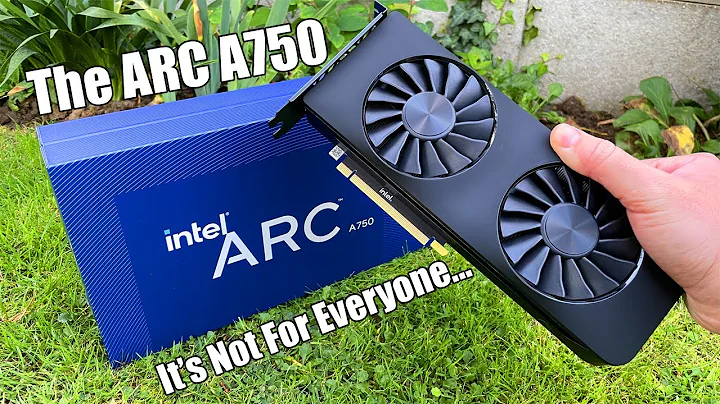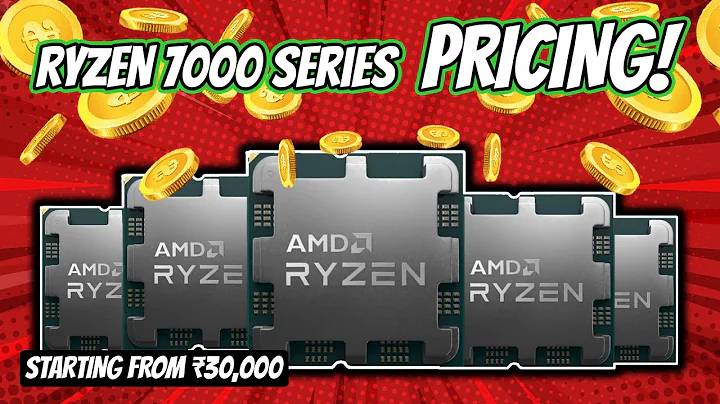Optimize Memory Performance in Intel FPGA Devices: A Comprehensive Guide
Table of Contents:
- Introduction
- Available Memory Solutions
- Architectural Features of Intel FPGA Devices
- Hard Memory Controller
- Data Reordering and Efficiency Features
- Additional Soft Logic Requirements
- Resources for Implementing Memory Interfaces
Article:
Introduction
Welcome to this online training about high-performance memory interfaces in Intel FPGA devices. In this training, we will explore the various options available for implementing memory interfaces in the latest Intel FPGA devices and how to effectively implement them in your designs.
Available Memory Solutions
The latest Intel FPGA devices support a wide range of standard memory types, including DDR3, DDR4, LPDDR3, and HBM2. Each memory type has its own unique features and maximum performance capabilities. DDR4 memory, for example, offers high bandwidth and clock speeds of up to 1.333 GHz, while HBM2 memory provides even higher bandwidths of up to 256 GB/s. It's important to carefully consider the memory type that best suits your application's requirements.
Pros:
- Support for a wide range of standard memory types
- High bandwidth and clock speeds for improved performance
Cons:
- Different memory types may require additional design considerations and expertise
Architectural Features of Intel FPGA Devices
The architectural features of Intel FPGA devices have significantly evolved in the latest device families. In previous generations, a mixture of hard and soft logic resources were used to implement memory interfaces. However, in the newest devices, dedicated hard resources have been specifically designed to implement memory interfaces, resulting in improved performance and timing closures.
One key architectural feature is the arrangement of I/O cells in vertical columns in the center of the device. Each column consists of multiple I/O banks, and each bank is responsible for implementing a complete memory interface. This arrangement allows for communication between the banks and with the soft logic. Furthermore, each bank includes a PLL for clocking the memory interface and a dedicated memory controller block for implementing the memory interface.
Pros:
- Dedicated hard resources for implementing memory interfaces
- Improved performance and timing closures
Cons:
- Architectural changes may require additional design considerations and expertise
Hard Memory Controller
The hard memory controller is a crucial component for controlling external memories in Intel FPGA devices. It offers several key features that enable efficient and optimized memory access. These features include:
- Bypass mode for custom controller use
- Support for different memory types and widths
- External memory ODT control
- Advanced memory refresh options
- Additional low-power modes
- Read and write control for memory mode registers
- Handshaking with SmartVID for voltage management
Pros:
- Efficient and optimized memory access
- Support for various memory types and widths
Cons:
- Eccentricities and complexities may require careful configuration and testing
Data Reordering and Efficiency Features
To maximize memory access efficiency, the hard memory controller employs various techniques such as look-ahead bank management, data reordering, and command aging. Look-ahead bank management involves intelligently reordering memory commands to minimize idle time on the data bus. This ensures continuous data flow and reduces latency.
Data reordering allows the controller to group read and write operations together, minimizing bus turnaround time when switching between reading and writing different memory banks. Additionally, the controller performs inter-row data reordering to minimize delays when accessing different rows within the same memory bank.
Command aging and starvation control further optimize memory access by prioritizing commands based on their age and preventing commands from being left behind for too long.
Pros:
- Maximizes memory access efficiency
- Reduces latency and improves data flow
Cons:
- Requires careful configuration and understanding of memory access Patterns
Additional Soft Logic Requirements
While the hard memory controller and I/O banks provide a complete self-contained solution for implementing memory interfaces, there are situations where additional soft logic is required. This includes cases where custom controllers are implemented or when specific memory interface types (e.g., DDR3, LPDDR3) are used. In these cases, soft logic modules need to be added between the user logic and the controller to ensure proper communication and functionality.
Pros:
- Flexibility to customize memory interface controllers
- Support for various memory interface types
Cons:
- Requires additional design and configuration efforts
Resources for Implementing Memory Interfaces
Intel FPGA provides a wealth of resources to support users in implementing memory interfaces in their designs. These resources include comprehensive documentation, training classes, online forums, and technical support. The documentation, such as the EMIF Support Center and EMIF IP User Guides, offers in-depth information on various aspects of memory interfaces. Training classes and online forums provide opportunities to learn, share experiences, and find solutions to common issues. Intel FPGA's technical support team is also readily available to assist with any questions or challenges that may arise.
Pros:
- Comprehensive documentation and resources
- Training classes and technical support available
Cons:
- Inadequate utilization of available resources may limit effectiveness and efficiency
In conclusion, designing and implementing high-performance memory interfaces in Intel FPGA devices requires careful consideration of various factors such as memory type, architectural features, controller functionality, data reordering techniques, and additional soft logic requirements. By leveraging the available resources and applying best practices, developers can optimize memory access and achieve efficient and reliable performance in their designs.
Highlights:
- Intel FPGA devices support a wide range of standard memory types including DDR3, DDR4, LPDDR3, and HBM2, offering high-performance options for different applications.
- The architectural features of Intel FPGA devices have significantly evolved, utilizing dedicated hard resources for memory interfaces, resulting in improved performance and timing closures.
- The hard memory controller provides advanced features such as look-ahead bank management, data reordering, and command aging to optimize memory access efficiency.
- Additional soft logic may be required in certain situations, such as custom controllers or specific memory interface types.
- Intel FPGA provides comprehensive documentation, training classes, and technical support to assist developers in implementing memory interfaces effectively.
FAQ:
Q: What are the different memory types supported by Intel FPGA devices?
A: Intel FPGA devices support a wide range of memory types, including DDR3, DDR4, LPDDR3, and HBM2.
Q: What are the key architectural features of Intel FPGA devices for memory interfaces?
A: The key architectural features include vertical I/O cell columns, dedicated memory banks, PLLs for clocking the memory interface, and a hard memory controller block.
Q: How does the hard memory controller optimize memory access efficiency?
A: The hard memory controller utilizes techniques such as look-ahead bank management, data reordering, and command aging to minimize idle time and reduce latency.
Q: Is additional soft logic required for implementing memory interfaces in Intel FPGA devices?
A: In some cases, additional soft logic may be required, such as when custom controllers are implemented or when specific memory interface types are used.
Q: What resources are available for implementing memory interfaces in Intel FPGA devices?
A: Intel FPGA provides comprehensive documentation, training classes, online forums, and technical support to assist developers in implementing memory interfaces effectively.


 134.6K
134.6K
 63.43%
63.43%
 10
10


 10.6K
10.6K
 13.52%
13.52%
 14
14


 43.1K
43.1K
 17.49%
17.49%
 24
24


 < 5K
< 5K
 1
1


 7.3K
7.3K
 47.36%
47.36%
 16
16


 < 5K
< 5K
 13
13


 45.7K
45.7K
 16.2%
16.2%
 44
44


 < 5K
< 5K
 37.79%
37.79%
 9
9
 WHY YOU SHOULD CHOOSE TOOLIFY
WHY YOU SHOULD CHOOSE TOOLIFY



































